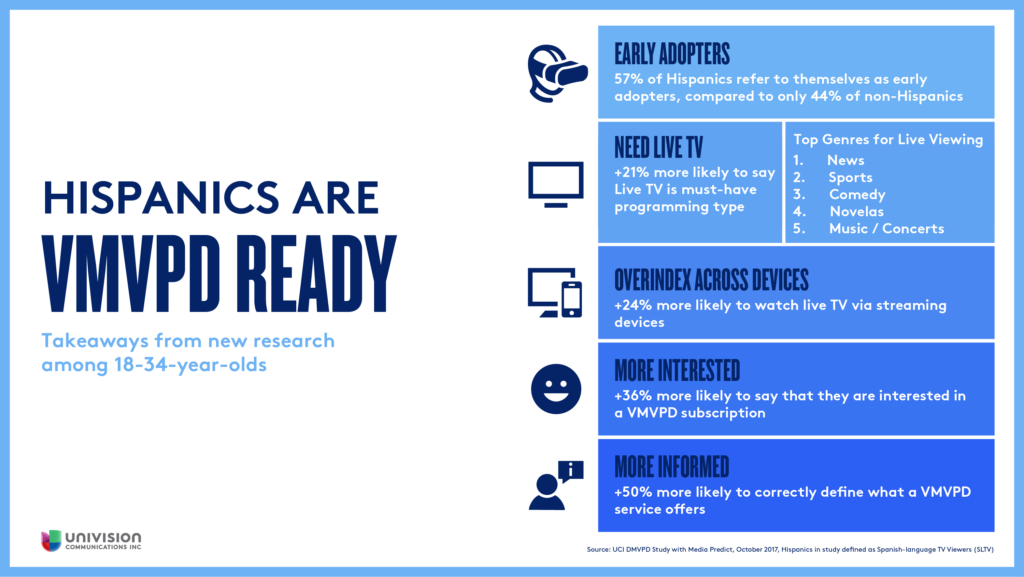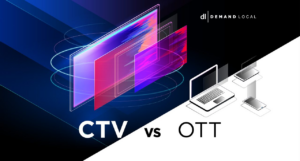Video streaming services have become increasingly popular in recent years, allowing consumers to watch movies and TV shows online through subscriptions rather than traditional cable or satellite packages.
One type of streaming service that has emerged is the virtual multichannel video programming distributor or vMVPD.
vMVPD services offer a cable-like experience delivered over the internet, providing live TV channels, DVR functionality, and on-demand content.
They provide a middle ground between cable/satellite and on-demand-only services like Netflix.
In this article, we’ll take a deeper look at what vMVPD services are, their features and benefits, major providers, and the future outlook for this segment of the streaming market.

What is vMVPD?
vMVPD stands for “virtual multichannel video programming distributor.” Essentially, these are streaming versions of cable or satellite TV providers.
vMVPD services offer live streams of major broadcast and cable channels over the internet. This allows subscribers to watch popular TV channels live, view on-demand libraries, and access DVR/cloud DVR features to record shows.
The “virtual” part refers to it being delivered over the internet rather than through dedicated cable or satellite networks.
Some key characteristics of vMVPD services include:
- Live streams of major TV channels like ESPN, CNN, Fox News, etc.
- On-demand libraries of older TV shows and movies
- DVR functionality to record live TV to watch later
- Accessible on many devices like smartphones, tablets, computers, smart TVs
- No contracts, and more flexible subscriptions than traditional TV
The channel packages, features, and pricing vary among the different vMVPD providers.
But they aim to emulate the experience of cable/satellite without the lengthy contracts or hardware requirements. This makes them an appealing alternative as more viewers shift to streaming.
Major vMVPD Providers
Some of the largest vMVPD services include:
- YouTube TV – One of the most popular with 85+ channels. Offers unlimited DVR storage, up to 6 accounts per household, and wide device support. Packages start at $64.99/month.
- Hulu + Live TV – Includes over 75 live channels along with Hulu’s on-demand library. 50 hours of DVR storage is included. Pricing starts at $69.99/month.
- fuboTV – Focused on sports programming with 100+ channels. Includes a cloud DVR and support for up to 3 streams. Packages start at $69.99/month.
- Sling TV – An early vMVPD provider with separate channel packages for $35/month. Add-on options are available. Cloud DVR costs extra.
- AT&T TV Now – AT&T’s streaming TV service with 45+ channels for $69.99/month. Unlimited DVR upgrade is available.
- Philo – Budget-friendly option focused on entertainment channels. 59+ channels starting at $25/month.

Features and Benefits
vMVPD services aim to provide a similar experience as cable or satellite but delivered over the internet. Here are some of the core features and benefits vMVPD offers:
- Live TV Channels – The main draw of vMVPD is access to popular live channels like sports, news, entertainment, and more. Packages include major broadcast, cable, and regional sports networks.
- On-Demand Libraries – In addition to live TV, vMVPD services provide large libraries of older movies and shows available to stream on-demand. Great for binging favorites at any time.
- Cloud DVR – Record live TV to watch later just like a cable DVR. Some providers offer unlimited storage or extra storage for a fee. Makes it easy to save episodes, sports & other programs.
- Device Support – vMVPD apps run on smartphones, tablets, computers, smart TVs, and more. Stream on multiple devices under one account.
- No Contracts – No long-term contracts. Subscribe month-to-month and cancel anytime. More flexibility than traditional cable/satellite.
- Customization – Pick channel packages and add-ons tailored to your interests. Sports fans, movie buffs, and other niches can customize lineups.
- Affordability – Packages typically start around $40-70/month. More streaming for your budget versus big cable bills.
- Simplicity – vMVPD delivers live TV, DVR, and on-demand without cable boxes or installation. It’s an easier, fuss-free alternative.
The convenience and customization of vMVPD make this an appealing choice for cord-cutters seeking live TV.
The streaming delivery and flexible plans are well suited to mobile, connected lifestyles.
vMVPD vs. Cable/Satellite
How does virtual streaming TV stack up against traditional cable or satellite TV? Here’s a look at some of the key differences:
- Contracts – No long-term contracts with vMVPD. Cable/satellite typically requires 1-2 year contracts with early termination fees.
- Hardware – vMVPD runs on your existing devices. No need for cable boxes or dishes. Makes it more portable.
- Pricing – vMVPD starts cheaper than big cable/satellite packages and has no hidden fees. But cheaper streaming may have fewer channels.
- Live TV – vMVPD replicates the live TV experience but with smaller channel bundles. Satellite offers the most channels.
- Sports – With regional sports networks, vMVPD is decent for sports fans. Satellite has wider national coverage.
- Picture Quality – Cable/satellite TV resolution can be superior to streaming. But vMVPD quality is improving with 4K and HD channels.
- DVR – Most vMVPD services offer cloud DVR with recordings stored in the cloud. Cable uses set-top DVRs to record.
- Added Fees – Cable/satellite has extra fees for boxes, recording, etc. vMVPD has the flexibility to add channel packs or other features.
While vMVPD takes a streaming-focused approach, traditional pay TV still has wider channel options. But vMVPD gives subscribers more freedom to customize their TV package and watch across devices.
Outlook for vMVPD Growth
According to research firm Ampere Analysis, the vMVPD market is projected to grow to nearly 24 million households by 2023, up from around 10 million at the end of 2019. This represents solid growth for the still-maturing technology.
Factors driving vMVPD growth include:
- Continued rise of cord-cutting – More consumers are seeking low-cost streaming TV alternatives.
- Content improvements – vMVPD services are expanding channel options and adding 4K to enhance picture quality.
- Cloud DVR enhancements – Increased DVR storage and better versatility appeal to users.
- Promotions and bundles – Telecom partnerships with wireless/internet providers help attract new vMVPD subscribers via discounts.
- Plentiful device access – Growing usage across smartphones, tablets, computers, smart TVs, and game consoles expands the addressable market.
While forecasting strong growth, vMVPD still faces challenges:
- Consumer awareness – Many still perceive it as a niche offering compared to leading streaming brands like Netflix.
- Channel gaps – Some consumers find vMVPD channel bundles incomplete compared to traditional TV. Sports in particular have rights issues.
- Increased competition – Major media companies are launching their standalone streaming services.
But on the whole, vMVPD appears well positioned to become a mainstream alternative for TV viewers looking for a cable-like experience with the flexibility of streaming.

Conclusion
vMVPD delivers a robust cable-like TV experience through streaming. With live channels, DVR, and on-demand in an affordable package, vMVPD gives cord-cutters a flexible option to ditch cable without losing live TV access.
As the technology matures and awareness grows, expect vMVPD services to become an increasingly popular choice for home entertainment.
Frequently Asked Questions (FAQ)
Q1. What channels do vMVPD services offer?
Ans. vMVPD services carry most of the major cable channels like ESPN, CNN, TNT, Discovery, FX, USA, and more. Local broadcast networks like ABC, CBS, Fox, and NBC are available based on your zip code. Regional sports networks vary by provider.
Q2. How is the picture quality with vMVPD?
Ans. Many channels stream in 720p or 1080p HD quality. Some providers also offer a limited selection of channels in 4K resolution. Picture quality depends on your internet speeds – faster broadband provides better video quality.
Q3. Can I use vMVPD services on multiple devices?
Ans. Yes, vMVPD apps are available across many devices like phones, tablets, computers, smart TVs, and game consoles. Most allow you to stream on 2 or more devices simultaneously through one account.
Q4. What are the main differences between vMVPD providers?
Ans. The main differences are channel packages, DVR storage, number of simultaneous streams allowed, and pricing. Compare lineups and features to pick the provider that best fits your needs.
Q5. How do I sign up for a vMVPD service?
Ans. You can sign up directly through the vMVPD provider’s website. Simply select your preferred package, create an account, provide billing information, and start watching. No credit checks or contracts are required.




